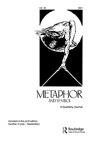杀手,小偷还是同伴?基于语料库的英国小报痴呆隐喻研究
IF 3.3
3区 文学
0 LANGUAGE & LINGUISTICS
引用次数: 0
摘要
摘要:本文研究了英国小报在10年期间(2010-2019年)用来代表痴呆症的隐喻。该分析采用基于语料库的方法对隐喻进行识别和分析,特别是运用语料库语言的搭配分析技术。隐喻是根据它们所设定的“目标”来考虑的,其中包括痴呆症的以下方面:(i)患病率;(二)原因;(三)症状和预后;(iv)生活经验;(v.)回应。我们发现了一系列隐喻,小报表现出对隐喻的特别偏好,这些隐喻将痴呆症构建为一个代理和暴力实体,将痴呆症患者构建为被动受害者,并展望了对痴呆症的预防性反应,如药物干预和个人行为改变。有人认为,这样的隐喻有可能导致痴呆症的耻辱,并将重点放在预防或消除痴呆症上,而背景反应可能有助于人们在此时此地与该综合征“生活得更好”。将痴呆症视为伴侣或将痴呆症的经历视为旅程的隐喻被提出,作为可能不那么污名化的替代方案,可能更好地反映这一复杂公共卫生问题的特殊性。本文章由计算机程序翻译,如有差异,请以英文原文为准。
Killer, Thief or Companion? A Corpus-Based Study of Dementia Metaphors in UK Tabloids
ABSTRACT This article examines the metaphors that are used to represent dementia in British tabloid newspapers over a ten-year period (2010–2019). The analysis takes a corpus-based approach to metaphor identification and analysis, utilizing in particular the corpus linguistic technique of collocation analysis. Metaphors are considered in terms of the ‘targets’ they frame, which include the following aspects of dementia: (i.) prevalence; (ii.) causes; (iii.) symptoms and prognosis; (iv.) lived experience; and (v.) responses. A range of metaphors are identified, with the tabloids exhibiting a particular preference for metaphors which construct dementia as an agentive and violent entity and people with dementia as passive victims, and which foreground preventative responses to dementia such as pharmacological intervention and individual behavior change. It is argued that such metaphors have the potential to contribute to dementia stigma and place focus on preventing or eliminating dementia while backgrounding responses which may help people to “live well” with the syndrome in the here-and-now. Metaphors which frame dementia as a companion or which the experience of dementia as a journey are put forward as potentially less stigmatizing alternatives which might better reflect the particularities of this complex public health issue.
求助全文
通过发布文献求助,成功后即可免费获取论文全文。
去求助
来源期刊

Metaphor and Symbol
Multiple-
CiteScore
2.90
自引率
0.00%
发文量
23
期刊介绍:
Metaphor and Symbol: A Quarterly Journal is an innovative, multidisciplinary journal dedicated to the study of metaphor and other figurative devices in language (e.g., metonymy, irony) and other expressive forms (e.g., gesture and bodily actions, artworks, music, multimodal media). The journal is interested in original, empirical, and theoretical research that incorporates psychological experimental studies, linguistic and corpus linguistic studies, cross-cultural/linguistic comparisons, computational modeling, philosophical analyzes, and literary/artistic interpretations. A common theme connecting published work in the journal is the examination of the interface of figurative language and expression with cognitive, bodily, and cultural experience; hence, the journal''s international editorial board is composed of scholars and experts in the fields of psychology, linguistics, philosophy, computer science, literature, and media studies.
 求助内容:
求助内容: 应助结果提醒方式:
应助结果提醒方式:


